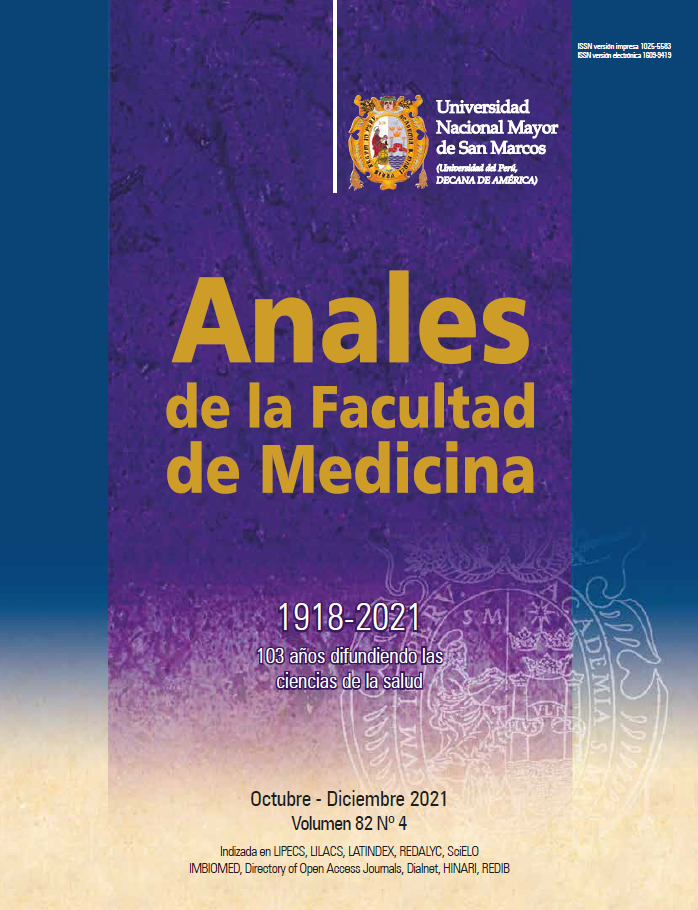Effect of the SERUMS Program on the equity of the distribution of human resources at the first level of care of Peru
DOI:
https://doi.org/10.15381/anales.v82i4.22019Keywords:
Health Workforce, Primary Health Care, Rural Health Services, Health Status Disparities, Gini CoefficientAbstract
Introduction. The adequate allocation and equitable distribution of human resources are essential for the health system›s performance, especially at the first level of care. The Rural and Urban Marginal Service Program (SERUMS) is the primary strategy developed by the Peruvian State for this purpose. Objective. To describe the effect of the number of doctors, nurses, and midwives of the SERUMS Program on the equity of the distribution of human resources at the primary care level. Methods. Observational, descriptive, and cross-sectional study of a census nature based on the National Registry of Health Personnel - INFORHUS, August 2019. Staffing indicators were applied, it was verified if there is a difference between the percentage distribution of SERUMS and non-SERUMS professionals, density (professionals per 10 000 inhabitants at the departmental level, poverty quintile, and rurality), and Gini coefficients (departmental) were calculated. Results. The population consisted of 6037 SERUMS professionals and 27 495 non-SERUMS professionals. The SERUMS Program significantly increased the number and density of professionals in almost all departments. In 5 regions, SERUMS professionals represented more than 50% of the workforce. Significant increases in the number of doctors were found in the poverty quintile and rural areas analysis. According to the Gini coefficients, the SERUMS program showed greater inequality in its distribution in favor of the most vulnerable populations. Conclusions. The SERUMS Program significantly increases the number and density of healthcare professionals, especially in the poorest districts of Peru.
Downloads
Published
Issue
Section
License
Copyright (c) 2022 Anales de la Facultad de Medicina

This work is licensed under a Creative Commons Attribution-NonCommercial-ShareAlike 4.0 International License.
Those authors who have publications with this magazine accept the following terms:
- Authors will retain their copyrights and guarantee the journal the right of first publication of their work, which will be simultaneously subject to Creative Commons Attribution License that allows third parties to share the work as long as its author and its first publication this magazine are indicated.
- Authors may adopt other non-exclusive licensing agreements for the distribution of the version of the published work (eg, deposit it in an institutional electronic file or publish it in a monographic volume) provided that the initial publication in this magazine is indicated.
- Authors are allowed and recommended to disseminate their work over the Internet (eg: in institutional telematic archives or on their website) before and during the submission process, which It can produce interesting exchanges and increase quotes from the published work. (See El efecto del acceso abierto ).



